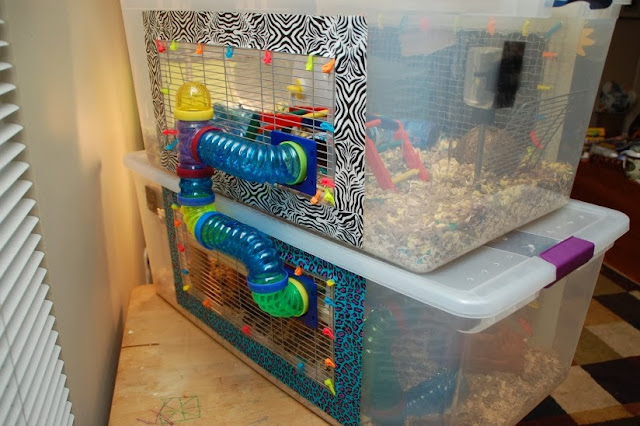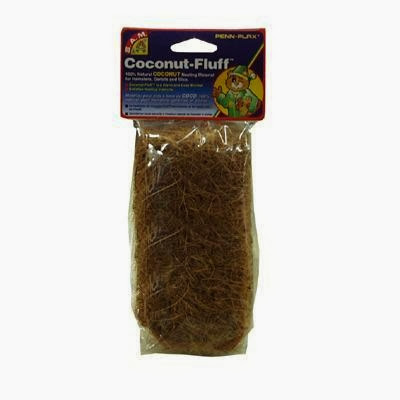One large storage bin. Clear bins are ideal because then you can see in, your hamster can see out, and you don't have to worry about making mesh "windows". (Windows, aside from being more work, can be dangerous because the hamster could climb them and fall. Some hamsters also LOVE to chew on bars and metal wires which could hurt them.)
You may wonder what size bin you should purchase. It should be at least 20 x 30 inches . This is the minimum comfortable size for one Syrian hamster or two dwarf hamsters. The bin I'm working on in this tutorial is 20 x 30 because that is the only one we could find deep enough to fit the 12" Comfort Wheel (Syrian hamsters need a 11" or 12" wheel. Any smaller and they will need to lift their neck and arch their back to run.) The first bin I made has way more floor space (33 3/4" L x 19 3/8" W x 13 3/8" H), but isn't quite deep enough to fit the 12" Comfort Wheel (which is about 14" all together). That means I had to order the 11" Wodent Wheel online, which is fine, but not as convenient. I'm still glad my hamster has more floorspace AND a big enough wheel, but I knew my friend who I was making this for didn't want to special order the wheel and have to wait.
Wire mesh. It's also known as "hardware cloth" or branded under Yardgard. I just got a generic roll at Home Depot. If you're only making one cage you'll be fine with the smallest roll they have. It should be around 19 or 23 gauge . (I used 23 gauge.)
Nuts, bolts, and washers. You'll need 16 nuts, bolts, and washers to affix the mesh to the lid. For those who will be totally lost going into the hardware store (*raises hand*), you need machine screws. I used 3/8 of an inch long eight thirty-two screws (8-32x3/8 ) and size 8 washers.
Wire. I didn't have to buy any because there was wire wrapping the wire mesh. A foot long length of plain ol' wire will work.
Water bottle. I like these All Living Things water bottles. You can get them at Petsmart in lots of sizes and colors for cheaper than online. Some people think they're leaky, but they shouldn't be, provided you follow the instructions they come with about forming a vacuum in the bottle. The first cage I made uses a 4 ounce bottle, this cage is uses 6 ounce bottle. Both work well.
Wheel. This post illustrates the proper sized wheel for a Syrian or "teddy bear" hamster. When it comes to wheels, bigger is better. A Syrian really does need an 11" or 12" wheel. If the hamster is bending his back or neck to run, even a little, it causes enormous strain. It's kind of like an adult racing 40 miles and hour in a kiddie go-cart for five hours every night. Not comfortable at all. For a dwarf hamster, an 8" or 8.5" wheel would be best. Wodent Wheels (in 8", 11", and 12"), Silent Spinners (in 12"), and Comfort Wheels (in 8.5" and 12") are all good brands and sizes.
Oh! And don't forget - you're gonna want a plastic wheel. The metal ones can be dangerous for little hamster feet and legs. It's not unknown for them to break a limb or to rub the fur off of their noses while running.


















